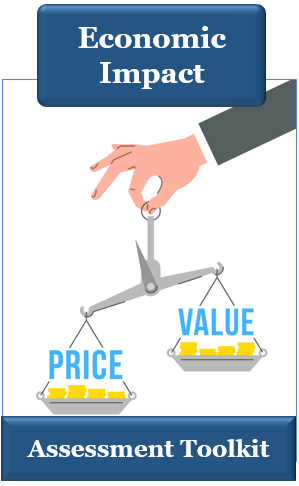All You Need For Successful Change Request in Project Management
Summary – Project Management Change Request Process
Change request management plays a pivotal role in project management, addressing the need to adapt ongoing projects without straying from set objectives. This encompasses diverse change types, ranging from Corrective to Preventive Actions and Defect Repairs, each catering to specific project challenges.
This vital process breaks down into six methodical stages: Identification, Documentation, Assessment/Evaluation, Decision Making, Implementation, and Review. Together, these stages offer a seamless transition of changes from initial spotting to final implementation, ensuring that all alterations are well-structured and optimally managed.
Different frameworks offer various classifications to manage change. For instance, within the ITIL framework, changes are neatly slotted as Standard, Normal, or Emergency. Contrarily, Agile methodologies prioritize adaptability, facilitating the seamless integration of change requests during ongoing sprints.
In technical sectors like engineering and software development, the importance of change request templates cannot be overstated. These predetermined structures act as communication bridges, ushering in clarity and consistency, especially crucial in these intricate domains.
The integration of specialized templates such as IT Change Management template, ITIL Request for Change template, and Change Request Log template further refines the process, bringing in enhanced transparency and accountability. By steadfastly following this streamlined approach, and by leveraging these tools, organizations can adeptly handle change requests, mitigating disruptions and consistently delivering premium project and service quality.
Want to get more information about project management change request process? Head down to our Table of Contents and continue your journey.

Everything You Need to Know About Project Change Requests
|
DETAILED SECTION |
|
If you’re excited to learn more about change request tracking in project management, proceed to our detailed sections below that provide a detailed overview. |
Table of Contents: 2024 Guide on Change Request in Project Management
Keep on scrolling down this page to read each section or click any link below to go directly to that section.
- Introduction to Change Request Management | CR Change Request Definition
- Types of Change Request | 3 Types of Change Requests in Projects
- Change Request Procedure | Change Request Process Flow
- Overview of ITIL Change Request
- Engineering Change Request | Engineering Change Request Template
- Software Change Management | Software Change Request Template
- Agile Change Request Approach
- The Importance of a Schedule Change Request
- How to Utilize the Example of Request Form Scenarios
- Change Request Form Template Resources | Free Change Request Template Download
- CR Change Request Process Takeaways | If You Can’t Change It Change It
- Conclusion | Project Management Change Request
- FAQ | Change Management Request Overview
See Also: Best Change Control Process & Board Management Guide with Free Templates & Checklist
Introduction to Change Request Management | Change Request Definition
The change request definition encapsulates the formal proposition to amend any aspect of an ongoing project.
These modifications could span various facets, such as the project’s timeline, budget, or the designated resources.
However, the CR change request or just change request meaning is more than just about suggesting alterations; it is about effectively communicating these proposed changes and ensuring they align with the project’s overall goals.
The process of handling such proposals is referred to as change request management.
Handling and managing change requests effectively is a critical aspect of any project management process. Change requests in project management often require considerable effort and should be managed efficiently to prevent delays or increased costs.
As defined by the change request definition, a change request in project management can involve any amendments to:
- project scope,
- schedule,
- budget, or
- quality parameters.
It is a mechanism through which teams can adapt and respond to unforeseen project dynamics while ensuring a controlled approach to managing changes.
For instance, an engineering change request could involve the alteration of the design or specifications of a product. Changes are inevitable, and the better a team can manage them, the more successful the project will be. This principle is the essence of the project management change request.
With change request definition clearly outlined, let’s take a look at types of change requests that can trigger the change request process.
Do you need more information change request form project management or IT change request form process in general? Please reach out and let us know.
Types of Change Request | 3 Types of Change Requests in Projects
In the world of project management, understanding the types of change request that could emerge is pivotal to the overall change request process.
Whether it’s under the framework of ITIL (Information Technology Infrastructure Library) with ITIL change types, or specific to project management itself, having a grasp of these types aids in preparing and adapting to change.
The ITIL change types give a comprehensive structure to handle changes in IT services, splitting them into three broad categories:
- Standard Changes,
- Normal Changes, and
- Emergency Changes
1. Standard Changes – Types of Changes in ITIL
These are low-risk, pre-authorized changes that follow a procedure or work instruction – for instance, password resets or provisioning of a server. Standard ITIL change types are those that are well-understood, fully documented, and proven to be safe, efficient, and effective.
2. Normal Changes – Types of Changes in ITIL
These types of changes in ITIL require formal review and authorization by the Change Advisory Board (CAB). Normal changes often involve significant modifications that require a thorough review process. For example, a software upgrade would fall into this category.
3. Emergency Changes – Types of Changes in ITIL
For these ITIL change types, the procedures are expedited to prevent an impending incident or resolve a service outage. An emergency change might involve a crucial security patch or remedying a major service disruption.
Shifting our attention to project management, there are primarily 3 types of change requests in projects.

Types of Change Request
3 types of change requests in projects include:
1. Corrective Action
These types of change request occur when the project’s performance deviates significantly from the plan. The corrective action aims to realign the performance with the project plan.
2. Preventive Action
These types of change request in projects are proactively identified to decrease the probability of potential negative impacts on project objectives. For example, this could involve adjusting the project schedule to mitigate the risk of delay.
3. Defect Repair
If an item or product does not meet its intended functionality or specification, a defect repair is needed. It’s one of the common types of change request, especially in software development projects, to ensure the product’s quality and functionality.
The types of change request, whether according to the ITIL change types or in projects, each have a distinct role and process in the change management framework.
By understanding the different types of changes in ITIL and the 3 types of change requests in projects, organizations can better manage and navigate through the inevitable landscape of change in any project or IT service management endeavor.
With types of changes in ITIL and project management covered, let’s move into change request process flow.
Related: Ultimate Guide on the IT Change Management Process (ITIL)
Change Request Process | Change Request Process Flow
The change request process is a pivotal element in the context of project management, functioning as the comprehensive mechanism for proposing, assessing, approving, and implementing changes in a systematic and controlled manner.
In any project’s life cycle, the change request process provides the necessary structure to manage shifts in the project’s parameters effectively and ensure that all changes contribute positively towards achieving the project’s goals.
The change request process flow delineates the sequence of steps involved in the change request process, and it ensures that all changes are meticulously evaluated before implementation.
Each step in the change request process flow builds upon the previous one, helping in the smooth transition of a project change request from its inception to conclusion.
Change request process in project management includes the following steps:
- Identification
- Documentation – Change Request Form
- Assessment/Evaluation
- Decision Making
- Implementation
- Review
 Guide On Managing Change Requests
Guide On Managing Change Requests
During the life cycle of a project, multiple project change requests may arise.
Each of these project change requests should be managed individually following the change request in project management process.
The change request procedure provides clear instructions on how to navigate through each step of the change request process, ensuring consistency and efficiency.
In summary, the change request process in project management outlines a structured approach for managing change, encompassing a well-defined change request process flow and a comprehensive change request in project management procedure.
It is through this process that all project change requests are effectively dealt with, ensuring that any modifications contribute positively to the project’s overall goals.
Now that we have provided you with an outline of change request process, we’ll dive deeper into each of the steps of the project change request process.
Do you want to share a change management request form that provided value to you? Do you know more about change request in ServiceNow? Just get in touch and let us know.
1. Identification | Change Request Process
In the realm of project management, the process to handle modifications to a project’s scope, schedule, or resources commences with the crucial first step – detection of the necessity for change.
This step, often labeled as ‘Identification’, is the genesis of the change request in any project management scenario.
The Identification phase of project management change request is fundamentally about recognizing a necessity for alteration within the project, but it’s not limited to just that.
Identification stage of a project management change request involves:
- a comprehensive understanding of the existing circumstances,
- the factors contributing to the need for change, and
- the potential implications of the proposed change.
Identifying the need for a change can arise from various elements such as:
- an unexpected issue encountered during the engineering change request,
- the potential for enhancing efficiency within the software change management process,
- a change in client requirements in the change request in agile methodology
- and many others…
Each project change request example scenario necessitates a unique approach for change identification.
Further, it’s essential to understand that change identification isn’t an isolated part of project management change request.
Change request example: During a change request in SAP or a Jira change request, change identification is an ongoing task, continuously monitoring the project for any potential need for adjustments.
Moreover, while the need for change may arise from any corner of the project, it’s the responsibility of change request management to accurately identify and understand the change.
The more precisely the change is understood at this point, the more effective the ensuing change request documentation will be.
To promote an effective identification phase of change request process, an atmosphere of open dialogue is vital. This practice is critical in managing change requests across the project.
The identification phase isn’t just about noting a potential alteration but also involves initial change request documentation of the observations and assessments made. This preliminary information can prove crucial when designing the change request form in the next step of the change management procedure.
In conclusion, the initial identification stage in the change request process involves a meticulous approach to recognizing the need for alterations, understanding their implications, and fostering an environment that encourages proactive identification.
As the first step, it sets the tone for the subsequent steps in the change management procedure and the overall change request process.
Popular Article: Agile Change Management Framework for Change Mgrs
2. Change Request Documentation – Change Request Form | Change Request Process
Upon the identification of the need for a change, the change request process enters its second stage: Documentation.
Change request documentation, encapsulated in the change request form, is an integral part of the change request process in project management.
This critical phase of involves formulating a change request form that officially records the identified change.
What is a project management change request form?
The change request form is a pivotal tool within the broad scope of project management change request procedures.
Request change form plays a vital role in maintaining transparency, facilitating communication, and ensuring that all stakeholders are on the same page regarding the proposed change.
The change request form isn’t a one-size-fits-all document; it may differ based on the specific project management context.
Additionally, request change form serves as a formal record and communication tool that sets the foundation for the subsequent stages of the change request procedure.
Let’s take a look at some change request form examples together.
Change Request Form Examples – Change Request Form Sample
For instance, in an engineering change request scenario, the change request form may contain detailed technical specifications, diagrams, or calculations. Conversely, a software change request form might focus more on aspects such as functionality changes, code modifications, and impact on user experience.
Furthermore, the context also dictates the platform or tool where the change request form is created and managed.
In an agile environment, the change request form could be handled through tools like JIRA, while in a large-scale ERP transformation, a change request in SAP would be more appropriate.

Change Request Documentation – Change Request Document Template
What Does Typical Request Change Form Contain?
A typical change request form template includes comprehensive details of the proposed change.
Change request form usually encapsulates information such as:
- description of the change,
- the reason behind the change (business need or problem statement), and
- the anticipated impacts and benefits.
These details require careful attention to the change request definition and should be as precise and clear as possible.
They form the basis of subsequent stages like the evaluation and decision-making, making the change request documentation a cornerstone in change request management.
The change request form template could be a simple change request form for smaller, less complex projects.
Alternatively, change request template can be an elaborate document for large-scale changes, often managed through change management software.
Regardless of the format of the request change form, the change request template should be easy to understand, straightforward, and devoid of jargon as much as possible.
This clarity ensures that stakeholders from different backgrounds, such as IT, business, and project management, can comprehend the change proposed in the request change form and its implications.
If you’re looking for a change request document template that you can use in your change request process in project management, read on.
Further down in the article you can find a comprehensive document change control template.
With the formal change request documentation in hand, we move into the third step of the change request process: the Assessment or Evaluation.
Do you want to share any change request form examples or change management request form? Reach out today and let us know.
3. Assessment/Evaluation | Change Request Process
After a change has been thoroughly recorded on a change request form or possibly an engineering change request form, it transitions into the assessment or evaluation stage.
This crucial step in the change request procedure involves meticulously analyzing the potential impacts and benefits of the project change request. Here, managing change requests becomes an exercise in careful balance and understanding.
In this stage of the change request in project management, every potential implication on the project needs to be evaluated.
For instance, a software change request could affect the software change management process flow, while a change request in an agile environment may cause ripples in team dynamics or alter the project delivery timeline.
Every change request, be it a request change form or a software change request form, is dissected to ensure it aligns with the project’s objectives.
A project management change request, for example, might lead to resource reallocation or affect the project’s budget. Conversely, implementing a change request in SAP could require substantial resources.
In all these change request example cases, change management software development practices come in handy to manage these alterations effectively.
The distinction between a change order vs change request should also be considered during the evaluation.

Change Request Document Resources
What is change order vs change request?
An order usually pertains to immediate, minor changes, while a request often relates to larger, more significant modifications. A change order template or a change order request form might be employed to manage these types of changes.
It’s also critical to consider the ITIL change types during the evaluation. From standard, normal, to emergency changes, each type has unique implications and necessitates a different approach in the change request process flow.
Tools like an ITIL change management tool or a change management template Excel can aid in handling these types.
Additional documentation, such as a change request document, might be needed during the evaluation. This documentation might involve updating the change request log or using a change request log template to ensure the entire procedure is transparent and traceable.
Stakeholder and team feedback are also crucial during the evaluation phase of the change management request.
In environments like agile, where collaboration and client involvement are paramount, their perspectives can be invaluable. Tools like a project management change log can be helpful to track these inputs.
What is project management change log?
The project management change log is a structured record that tracks all change requests made during the life cycle of a project.
Project management change log isn’t merely a list; it’s a detailed register that encompasses the change request’s nature, the reason behind it, its status (approved, pending, rejected), the person who initiated it, potential impacts, and more.
Related: Quick Guide to Efficient ITIL Change Control
4. Decision Making | Change Request Process
Following the assessment and evaluation phase of the change request process, comes a critical point of decision making.
This is the juncture of the project change request process where all the compiled data, along with the evaluation findings, come into play.
Here, the leaders and relevant stakeholders decide whether to implement the change request in the project management framework or not.
Decision making in the change request management process is not a mere yes or no procedure. Instead, it’s a strategic process that involves weighing the potential benefits against the implications and risks of the proposed change.
In essence, this step of the change management request process is about determining if the potential rewards justify the investment and possible risks that the project change request may introduce.
The decision-making process is a critical part of managing change requests, as the changes approved or rejected here directly influence the course of the project.
When a project change request, such as a schedule change request or an engineering change request, lands on the decision table, it’s crucial to factor in its impacts on various project elements.
The decision must account for how the proposed change will impact the:
- project’s scope
- cost
- quality
- resources, and
- overall timeline
Some changes can seem beneficial at a glance but may introduce substantial risks or costs when examined closely.
A good change request example is a change request in agile methodology that speeds up a specific task but increases the overall project risk. Or, a software change request that introduces a new feature but extends the timeline significantly.
Similarly, changes that appear challenging or cost-intensive initially might bring substantial long-term benefits. An ITIL change request that requires significant upfront investment might lead to considerable efficiencies and cost savings in the longer term.
The decision-making process also extends to change management software tools, where automated workflows can help streamline the approval process.
Tools like ServiceNow change request module (change request in ServiceNow) or JIRA change request tracker can help manage and document the decision-making process, ensuring transparency and traceability.
We’ll talk more about change request management tool options later on in the article.
Implementation is the next pivotal phase in the change request process, so let’s move right into it.
Do you have any questions about change request in ServiceNow or project change request form? Don’t hesitate to reach out and let us know.
5. Implementation | Change Request Process
Once a project change request has been approved during the decision-making phase, it’s time to put the planned change into action.
However, implementing the change is not just about executing the tasks outlined in the request change form; it involves careful planning, meticulous execution, and constant monitoring.
The change request management team is responsible for orchestrating the implementation phase.
They utilize the change management software to map out a detailed plan that outlines the necessary steps, resources, and timeline for implementing the approved change.
Tools like the ServiceNow change request module or the JIRA change request tracker can be immensely useful for facilitating and change request tracking the implementation process.
Project Change Request Example Scenarios
- If the change request in project management pertains to a software change request, the implementation could involve coding, testing, and deployment tasks.
- For an engineering change request, the activities might include design modifications, prototyping, testing, and production changes.
Regardless of the change type, it’s crucial to ensure that every task is well-planned and executed according to the outlined plan.
The implementation phase may also require adjustments in the existing project plan – scope change request.

Implementation Phase of Change Management Request Process
What is scope change request?
A change in the project’s scope might require alterations in the project schedule, resource allocation, or budget.
The project change request form serves as a guiding document for implementing these changes.
The change request management team must communicate the change, its implications, and the implementation plan to all relevant stakeholders.
This communication can be facilitated through:
- change request log,
- meetings,
- change management software, and
- other change request management tool resources.
Upon completion of the implementation phase, it’s essential to update the change request documentation.
The change request document template should reflect the implemented changes, along with any alterations made in the project plan, resources, or timeline.
This leads us to the final phase of the change request process – the review.
Read More: Best Guide to Change Management Project Risk Analysis & Assessment
6. Review | Change Request Process
The final stage of the change request process flow is the review.
In this phase, the project team, along with change request management team, closely monitor and evaluate the effectiveness and impact of the implemented changes.
The primary goal of the review phase is to validate that the change has been implemented correctly, and it’s producing the desired outcomes as outlined in the request change form or project change request.
The review phase relies heavily on the use of change request tool or change management software, such as ServiceNow change request module or Jira change request tracker.
These change request tools provide a comprehensive view of the project, making it easy to compare the pre-change and post-change scenarios.

Change Request Tracking And Review
Change Management Request – Review Phase Examples
For instance, if the change request in project management was aimed at improving efficiency within the software change management process, the review phase would involve measuring the efficiency metrics post-change and comparing them with the baseline data.
Similarly, if the change was part of an engineering change request aimed at enhancing product quality, the review might involve checking the post-change quality indicators against the pre-change benchmarks.
In the event of a change request in agile methodology, the review phase is crucial for inspecting the iterative changes and ensuring they align with the project’s overall objectives.
In situations like a change request in SAP, a post-implementation review is critical for verifying that the new system configurations or functionalities are working as intended and delivering the expected benefits.
The change request log and change request documentation are vital tools in the review phase.
The project team and the change management request team can analyze the change request process flow, pinpoint any issues encountered during the process, and devise strategies for improvement in future change requests.
The outcome of the review phase should be well-documented in the change request documentation. Any observations, conclusions, or lessons learned should be accurately recorded for future reference.
Next, we’ll take a look at a brief overview of ITIL change request.
Do you have any questions about change control request form? Do you know of any change request template Excel download our readers should know about? Please reach out and let us know. We’ll love to hear from you.
Overview of ITIL Change Request
In the dynamic realm of IT service management, understanding the intricacies of the ITIL change request is crucial.
The change request ITIL framework presents is deeply rooted in best practices, ensuring systematic tracking and handling of changes in IT infrastructure.
The ITIL change request procedure starts with the creation of an ITIL change request form.
ITIL change request form captures essential details, such as the nature of the change, reasons, potential implications, and more. Once filled, the ITIL change request form moves through various stages of assessment and validation.
However, it’s not just about filling out an ITIL change request template.
The foundation of the change request ITIL model is about maintaining the highest standards of service quality and minimizing potential disruptions.
This is where the ITIL change management tool or software plays a significant role.
Suitable software change tool with the principles of the ITIL change request, offers a platform for managers to monitor, assess, and execute changes effectively.
For those unfamiliar with the format or seeking a standard to follow, the request for change template ITIL provides a streamlined approach. You can find it further down in this article.
Our IT change request template simplifies the task of submitting changes by offering a preset template. Similarly, the ITIL change request template aids organizations in ensuring consistent and complete submissions.
The IT change management template complements the ITIL change request template, serving as a guide for managing and documenting changes.
When there’s a need for a change, especially in IT projects, the IT change request form becomes instrumental.
In many organizations, the IT change management form works hand-in-hand with the ITIL change request form. While the IT change request focuses on the specifics of the change, the IT change management form often delves into the broader strategies and justifications.
Looking for change request template download source? Read on, and get your change request download further down in this article.
Whether you’re leveraging the request for change template ITIL framework offers or using the IT change request template for IT-specific projects, it’s essential to ensure that every change is systematic, justified, and adds value to the organization.
Popular Article: How to Measure Success of a Project
Engineering Change Request | Engineering Change Request Template
The engineering change request form is a critical instrument in the modern engineering world.
Whether you’re working in hardware design, software development, or any field requiring iterative changes, having a well-structured engineering change request form is essential.
This form serves as a first step in the documentation process before moving on to more advanced stages, like using the engineering change order template.
Utilizing the engineering change request template streamlines the introduction of any proposed modifications, ensuring they’re clearly defined and documented.
What Information Should Engineering Change Request Template Contain?
An engineering change request template is a pivotal tool in the engineering and manufacturing sectors.
It provides a structured way to document and communicate proposed changes to product designs, specifications, materials, processes, and other elements that might affect the final product or its manufacturing process.
Here’s a breakdown of the essential information that should be included in an engineering change request template:
- Header: Request ID, Date, Requester.
- Product Details: Part Number, Current Revision.
- Change Description: Proposed alteration and reason.
- Impact: Affected components and cost implications.
- Supporting Documents: Any references or attachments.
- Approval: Space for review comments and signatures.
By ensuring that an engineering change request template is comprehensive, organizations can make more informed decisions, streamline communication, and improve traceability of changes.
If you’re looking for downloadable engineering change request form template, keep on reading as we have it ready for you later on in this article.

What Information Should Engineering Change Request Template Contain?
Next, let’s look at engineering change order template and the information it should contain.
What Information Should Engineering Change Order Template Contain?
An engineering change order is an official directive that outlines changes to be made to a product’s design, specifications, or manufacturing process after an initial design phase has been completed.
The ECO follows an Engineering Change Request (ECR) once the proposed change has been reviewed and approved.
Here’s a breakdown of the critical information that an engineering change order template should contain:
- Header: Unique Order ID, Date, Originator.
- Reference: Related Change Request ID and date.
- Product Info: Part Number, Current and New Revision Levels.
- Description: Change details and justification.
- Implementation: Affected documents, plan, and timeframe.
- Approvals: Signatures and verification section.
- Costs: Estimated cost and resource implications.
- Attachments: Supporting documents and diagrams.
- Notes: Additional context or feedback.
- Completion: Implementation date and post-review feedback.
Coupled with the engineering change management software, these tools allow engineering teams to monitor, evaluate, and implement changes effectively.
The engineering change management software is especially beneficial as it integrates all stages of change, from the initial software change request to the final implementation.
With engineering change order request covered, let’s take a look at software change request template.
Are you looking for some specific type of request change form, sample change request form, or IT change request form? Get in touch and let us know!
Software Change Management | Software Change Request Template
When it comes to software-centric organizations, the software change request form is a key tool in the change management toolkit.
By using a software change request form, teams can ensure that any proposed changes are communicated effectively, and with the help of the software change request template, these requests can be standardized.
A software change request template serves as a structured document used within the IT and software development sectors to communicate and detail any proposed modifications to an existing software system or application.
The essence of a software change request template is to capture critical data points about the desired change.
What Information Should Software Change Request Template Contain?
Software change request template should contain the following essential elements:
- Header: Unique Request ID, Date, Requester’s details.
- Software Details: Software Name, Current Version, and Module/Component.
- Change Description: Clear and concise description of the proposed change.
- Reason for Change: Justification or issue leading to the change request.
- Impact Analysis: Effects on other modules, software, or systems.
- Priority: Urgency level (e.g., low, medium, high, critical).
- Estimated Effort: Time and resources needed for implementation.
- Approvals: Signatures or acknowledgment from relevant stakeholders.
- Dependencies: Any related modules or functionalities affected.
- Attachments: Screenshots, diagrams, or related documents.
- Implementation Date: Tentative or proposed date for rolling out the change.
- Review and Testing: Steps for verification and validation post-change.
- Notes/Comments: Any additional information or context related to the change.
This standardization, along with software change management best practices, ensures consistency and quality in software development processes. Incorporating software change management best practices also means that there’s less room for errors or oversights.
The broader domain of change management also encompasses tools such as the change control management software.
Change control management software typically offers robust features that go beyond the engineering change order template or the software change request template.
Within the realm of IT service management, the ServiceNow change request system has risen in popularity.
Organizations using ServiceNow can efficiently process change request in ServiceNow, ensuring that IT changes are logged, assessed, and implemented systematically.
Now that we’ve covered software change request management, we’ll take a quick look at agile change request.
Are you using an engineering change management software that you’d like to recommend to our readers. If so, we’d love to hear from you.
Agile Change Request Approach
On the agile front, handling changes requires agility and adaptability.
An agile change request, for example, might come in during the middle of a sprint, requiring the team to evaluate its priority and potential impact.
Using the agile change request template simplifies this task, ensuring that the change request in agile methodology gets the attention and structure it requires.
What Information Should Agile Change Request Template Contain?
Change request in agile template should contain the following essential elements:
- Request ID: A unique identifier for the change request.
- Request Date: When the request was made.
- Requested By: Name or role of the person/team proposing the change.
- Sprint/Iteration: Reference to the specific sprint or iteration if applicable.
- Feature/Story Reference: Link or identifier of the associated user story or feature being impacted.
- Description of Change: Brief and clear outline of the proposed change.
- Rationale/Justification: Why is this change necessary? What prompted it?
- Impact Analysis: Quick evaluation of the change’s potential effects on the current sprint, backlog, and overall project timeline.
- Priority: Is this a high, medium, or low priority change? This helps in deciding the order of implementation.
- Estimate of Effort: An approximation of the effort (usually in story points or hours) required to implement the change.
- Dependencies: Other tasks, stories, or features that this change might be dependent on or impact.
- Approval Status: Indicating if the change is pending review, approved, or rejected.
- Approver’s Comments: Feedback or remarks from the decision-making authority, which can guide the next steps.
- Resolution/Outcome: Details on the final decision and any follow-up actions taken.
- Date of Resolution: When the change request was closed or resolved.
In fact, every change request in agile presents an opportunity to enhance the product or process, making the agile change request template a valuable tool in any agile practitioner’s toolkit.
Furthermore, with change management software development becoming more nuanced, the need for tools like the change control management software has grown.
Be it for tracking ServiceNow change request or managing an engineering change request form, it’s clear that well-defined processes, supported by the right tools, are the backbone of successful change management.
With a good understanding of agile change request approach, let’s take a quick look at the importance of schedule change request.
Don’t Miss: Everything You Need for Implementing a Communication & Stakeholder Management Plan
Do you have any input on change order request template or Excel change management template that we haven’t mentioned? If so, don’t hesitate to get in touch.
The Importance of a Schedule Change Request
Managing a business or organization often requires the flexibility to adapt to various circumstances that may emerge. One such adaptation is the need to adjust schedules. At the center of this is the concept of a schedule change request.
A schedule change request is a formal approach that allows employees or stakeholders to communicate their need for a modification in their previously approved or existing schedules. This request can stem from personal commitments, unforeseen events, or even project-related developments that require a different working timeframe.
To streamline the process and ensure that all requests are documented appropriately, many organizations have implemented the use of a schedule change request form.
This form standardizes the information needed, such as the reason for the request, the dates and times in question, and any potential impacts or adjustments needed.
Benefits of the schedule change request form include:
- Clarity and Documentation: Having a set format ensures that all the necessary details are captured, reducing back-and-forth communication.
- Efficiency: Managers can quickly review and make decisions based on the information provided in the form.
- Transparency: It ensures that all parties are kept in the loop regarding potential schedule changes, reducing misunderstandings or miscommunications.
However, it’s essential to manage and evaluate each schedule change request with care. Not every request can be accommodated due to various operational needs.
The evaluation process should be clear and unbiased. Having a set criteria or guidelines for evaluating each schedule change request ensures fairness and consistency in the decision-making process.
Furthermore, using a schedule change request form can also help in analyzing patterns.
For instance, if there’s a frequent need for changes in a particular department or for a specific reason, management can identify and address underlying issues more proactively.
In conclusion, a schedule change request is an invaluable tool for organizations, ensuring flexibility and adaptability while maintaining structure and transparency.
By utilizing a schedule change request form, organizations can further optimize the process, benefiting both management and employees alike.
Do you have any further input on change control request form or change management request form? Just reach out and let us know.
How to Utilize the Example of Request Form | Change Request Form Example Scenarios
Navigating the intricacies of project management often leads professionals to the doorstep of a change request form example.
Within the vast landscape of documentation, a good change request form example stands as a beacon for maintaining project consistency.
⋅ By studying different change request form examples, we can observe the variations and similarities in structure and content.
An example of request form typically serves as a prototype for organizations aiming to standardize their change processes.
When looking at any example of request form, it’s essential to ensure that it can be adapted to fit the needs of the specific project. In this context, a straightforward request form example might offer a glimpse into the basic requirements, whereas another request form example could be comprehensive, catering to complex projects.
The significance of a project change request example cannot be overstated. Such an example provides a framework for dealing with modifications specific to project deliverables or scopes.
⋅ Utilizing a project change request example can also save you a lot of time and effort.
To ensure uniformity, a sample change request form can be employed.
This sample change request form provides a blueprint for all subsequent change requests. For even more clarity, using a change request form sample from a completed project can be advantageous. This change request form sample allows teams to see a filled-out example, ensuring they capture all necessary details.
When the need arises for a specific change request sample, it often details the nature, implications, and mitigation plans for the change.
A robust change request sample will have a clear structure and easy-to-understand fields. When these change requests become more project-specific, the project change request template becomes an invaluable resource.

Benefits of Change Request Template Project Management
⋅ Organizations can turn to project change request templates to ensure consistency.
With the rise of digital tools, the project change request template excel version has gained immense popularity. The adaptability of the change request template Excel means that it can be tailored to any project’s needs.
Similarly, the change management template Excel offers tools for an overarching change management strategy.
⋅ Change management template Excel format makes analysis and tracking remarkably efficient.
For a more comprehensive approach, the change request form template Excel encapsulates all the details necessary for recording changes.
Given the complexities of certain projects, the change order request template becomes crucial.
This change order request template lays out the sequence and nature of changes. Meanwhile, the “excel change management template” assists in tracking these changes.
By employing the Excel change management template, managers can anticipate and mitigate potential issues.
⋅ The change management form template offers a more granular look at each change, ensuring that every detail is captured.
Organizations often lean on the change management form template for its detailed approach. For streamlined processes, the change request template project management tools provide a holistic view.
This change request template project management tool ensures that all change requests align with the project’s objectives. To further this, the change management request template looks at the broader implications of each change. Organizations can employ the change management request template to ensure no change is made in isolation.
Sometimes, projects require detailed change order documentation, and the project change order template serves this need.
Well-structured project change order template ensures that the sequence and priority of changes are clear.
For a more integrated approach, the project change request template Excel version combines the best of both worlds, offering project-specific change request capabilities in an Excel format.
Do you have any questions or input about project change request template Excel source we provided? Do you know of any valuable change request form examples? Just reach out and let us know.
Change Request Form Template Resources | Free Change Request Template Download
How can professionals ensure that every alteration, update, or modification is logged, assessed, and implemented smoothly?
The answer lies in leveraging the right set of document change control template resources.
These tools, ranging from IT-specific sheets to broad project management logs, are vital cogs in the machinery of systematic change management.
In this section, we delve deep into a curated selection of essential document change control template resources, elucidating their purpose and highlighting their significance in the intricate dance of change.
Whether you’re a seasoned project manager, an IT specialist, or simply a professional keen on streamlining processes, these downloadable templates will be very valuable to you.
FREE IT Change Management Template
IT change management template facilitates the structured management of changes within an IT environment.
Whether it’s implementing a new software feature, upgrading hardware, or any other IT-related change, IT change management template ensures that all alterations are logged, evaluated, and implemented systematically, reducing potential risks and ensuring smooth transitions.
Download IT Change Management Template
FREE Request for Change Template ITIL – Change Request Form Project Management
Within the framework of ITIL (Information Technology Infrastructure Library), managing changes effectively is crucial.
The request for change template ITIL or IT change request form is designed to capture detailed information about proposed changes to IT services.
Change request form project management covers aspects like the reason for change, potential impacts, and benefits, ensuring that changes align with business objectives and are implemented with minimal disruption.
Download Request for Change Template ITIL Template
FREE Document Change Control Template
Whenever there’s a need to modify official documents, it’s crucial to maintain a record of what was changed, why, and by whom. The document change control template serves this purpose.
It tracks alterations made to documents, ensuring transparency and accountability. This is particularly valuable in regulated industries where documentation integrity is paramount.
Download Document Change Control Template
FREE Change Request Log Template
Over the course of a project, numerous change requests can arise.
The change request log template acts as a centralized record of all these requests, allowing project managers and teams to track the status, approval, and implementation of each change.
Change request log template is invaluable for maintaining visibility into the change process and ensuring that no request goes unaddressed.
Download Project Management Change Log Template
FREE Excel Change Management Template Resources
As leaders in change management methodologies and standards, we are dedicated to backing the international change and project management communities.
We provide a variety of top-tier cloud-based and Excel change management template resources such as complimentary change management templates, checklists, business change strategies, and business transformation tools accessible via the link below.
Get Access to Free OCM Solution Cloud-Based and Excel Change Management Template Resources
CR Change Request Process Takeaways | If You Can’t Change It Change It
The “If you can’t change it change it change it” principle underscores a fundamental truth about the fluid dynamics of project management and the broader scope of organizational operation. At its heart, this concept acknowledges that change is not a static event but an ongoing cycle of improvement, adaptation, and recalibration.
In a world marked by rapid technological advancements, shifting market dynamics, and ever-evolving customer preferences, sticking rigidly to a predefined plan or strategy can be more detrimental than beneficial.
The phrase “If you can’t change it change it” serves as a mnemonic, reminding teams and leaders alike that the pursuit of optimal outcomes often necessitates an iterative approach.
When we implement a change, it’s not the end of the journey but rather a checkpoint.
Each CR change request presents an opportunity to learn and adjust. Upon implementing a change, teams should actively monitor the outcomes, comparing them against the expected results. If the results align with expectations, it’s an affirmation of the decision made. However, if there’s a discrepancy, it’s a signal that further adjustments are warranted.
The notion of “If you can’t change it change it” might seem paradoxical at first, but it emphasizes a growth mindset. Instead of perceiving an unsuccessful change as a failure, it’s seen as a learning opportunity.
If an approach isn’t working (you can’t change it), then you change the approach itself (change it). It encourages resilience and adaptability, reinforcing the idea that setbacks are merely stepping stones to better solutions.
Don’t Miss: How to Write the Best Training Plan
Conclusion: Change Request in Project Management
Navigating the intricate maze of project modifications has never been easier with a robust change request process in place.
Whether you’re managing software enhancements, engineering tweaks, or any other project adjustments, having a standardized method ensures efficiency, transparency, and alignment with project goals.
Our curated change management form template resources and examples serve as invaluable tools to streamline this process, minimize project disruptions, and ensure stakeholders remain informed.
As projects continue to evolve in complexity, leveraging these templates will undoubtedly foster a culture of continuous improvement, promoting both adaptability and excellence in project management.
Remember, it’s not just about managing change; it’s about managing it right.
FAQ: Managing Change Requests in Project Management
What’s the change request meaning?
The change request definition encapsulates the formal proposition to amend any aspect of an ongoing project.
These modifications could span various facets, such as the project's timeline, budget, or the designated resources.
However, the CR change request or just change request meaning is more than just about suggesting alterations; it is about effectively communicating these proposed changes and ensuring they align with the project's overall goals.
What is project management change request form?
Project management change request form is a standardized document or tool used in project management when there is a need to adjust or make changes to the project after its initial approval.
Project management change request form is an essential component of change management processes to ensure that any proposed modifications are documented, analyzed, and approved before implementation.
What is change order request form?
A change order request Form is a formal document used primarily in the construction industry and other project-based endeavors.
Change order request form is employed when there's a need to make alterations or adjustments to an already approved project scope, which can lead to changes in cost, time, or materials.
What is change request log?
Change request log is a tool used in project management to document and track all the change requests that are raised during the lifecycle of a project.
Given that changes can significantly impact a project’s scope, timeline, budget, and resources, it's essential to maintain a systematic record of all proposed and approved changes
Note: Content on OCM Solution's ocmsolution.com website is protected by copyright. Should you have any questions or comments regarding this OCM Solution page, please reach out to Ogbe Airiodion (Change Management Lead) or the OCM Solutions Team today. OCM Solution was previously known as Airiodion Global Services (AGS).
External sources: stock.adobe.com




